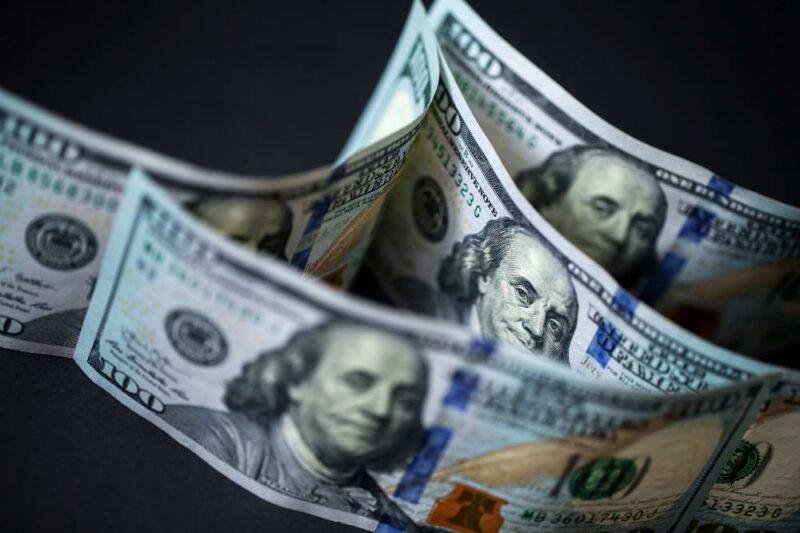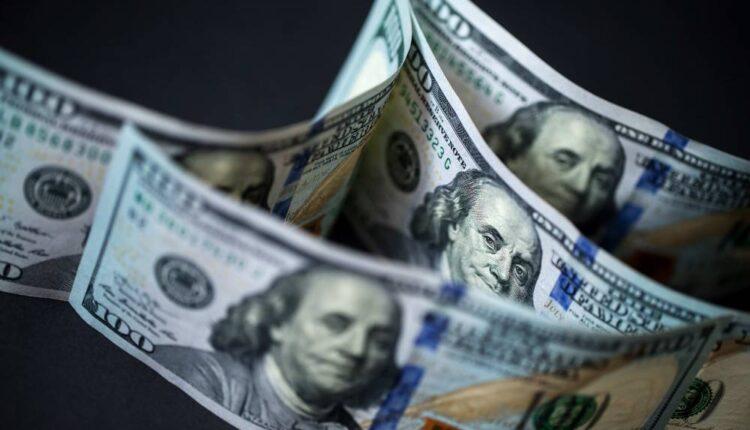
- The dollar traded at 107.11 yen in Asia on Wednesday, close to its lowest level in a month.
- Against sterling, the dollar was last quoted at $1.2626, near a five-week trough.
U.S. one-hundred dollar banknotes are arranged for a photograph in Hong Kong on April 15, 2019.Paul Yeung | Bloomberg | Getty Images
The dollar nursed losses on Wednesday as investors cautiously returned to riskier currencies after U.S. President Donald Trump edged toward rolling back some restrictions put in place to contain the coronavirus pandemic.
The greenback also remains under pressure following heavy measures by the Federal Reserve to boost dollar supply, however, analysts say it is too early for a full-scale retreat from safe-havens with the public health threat not yet eliminated.
"There's been a flood of money from the Fed, which is the backdrop behind market moves," said Michael McCarthy, chief market strategist at CMC Markets in Sydney.
"Trump has made it clear he wants to lift restrictions, and this is what the market wants to hear, but we are nowhere near the all-clear when it comes to this virus."
The dollar traded at 107.11 yen in Asia on Wednesday, close to its lowest level in a month.
Against sterling, the dollar was last quoted at $1.2626, near a five-week trough.
The dollar also briefly slipped to $1.0994 per euro, the lowest in two weeks.
Trump on Tuesday said he would speak with governors of all 50 states and authorize them to open their economies in a timely manner.
Daily fatalities in the United States from the coronavirus have fallen sharply, and states are making plans to get businesses open again.
Against the safe-haven Swiss franc, the dollar traded near a two-week low of 0.9597 in another sign of improving risk sentiment.
However, many analysts remain cautious after Trump's top infectious disease adviser said the U.S. president's target for restarting the economy by May 1 was "overly optimistic."
Another factor weighing on the dollar is the large amount of greenback liquidity provisions, credit backstops, and monetary easing the U.S. central bank has unleashed in the past month to contain the economic damage caused by the pandemic.
The Fed began a massive new lending program on Tuesday, and the cumulative impact of measures it has taken so far has unleashed a flood of dollars.
The U.S. currency faces a further test later Wednesday with the release of retail sales and industrial production, which is likely to provide more evidence of the economic costs of lockdowns.
The global economy is expected to shrink by 3.0% this year in a stunning coronavirus-driven collapse, marking the steepest downturn since the Great Depression of the 1930s, the International Monetary Fund said on Tuesday.
Elsewhere in currencies, the Australian dollar eased slightly to $0.6429, pulling back from a five-week high as some investors booked profits on recent gains.
Across the Tasman Sea, the New Zealand dollar edged lower to $0.6094.
Both currencies are often traded as proxies for risk because of their close links to China's economy and the global commodities trade.
Source: cnbc.com

